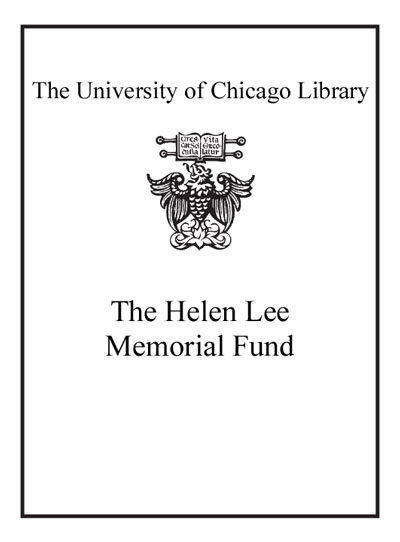The end of the pagan city : religion, economy, and urbanism in late antique North Africa /
Saved in:
| Author / Creator: | Leone, Anna, 1967- author. |
|---|---|
| Edition: | First edition. |
| Imprint: | Oxford : Oxford University Press, 2013. |
| Description: | xxii, 319 pages : illustrations (black and white) ; 23 cm |
| Language: | English |
| Subject: | |
| Format: | Print Book |
| URL for this record: | http://pi.lib.uchicago.edu/1001/cat/bib/9345480 |
Table of Contents:
- List of Illustrations
- List of Tables
- Abbreviations
- 1. Paganism and Christianity in Late Antique North Africa
- 1. Introduction
- 2. What Paganism and What Christianity?
- 3. Sacred and Secular: Augustine and his Contemporaries
- 4. From Paganism to Christianity: Donatism, the Circumcelliones
- 5. Vandal and Byzantine Conquests: An Overview
- 6. Urban Monumentality and Religiosity in Late Antique North Africa: A Summary
- 7. The End of Paganism in Late Antique North Africa
- 2. The Fate of Pagan Religious Architecture: Was there a Conversion from the Temple to the Church?
- 1. Introduction
- 2. The End of Temple Maintenance and Restoration
- 3. Emperors, Legislation, and the Fate of Temples
- 4. Cult Prohibition: The Archaeological Evidence of Private Cults
- 5. Post-Closure Temple Maintenance: The Legislation
- 6. The Fate of Temples: Use and Reuse of Buildings in North Africa
- 7. The End of Temples: An Ideological Event?
- 3. Pagan Continuity and Christian Attitudes: When did Paganism End?
- 1. Introduction
- 2. Sacerdotes and Flamines in Late Antique North Africa
- 3. Fifth-Century Evidence: The Vandal Period
- 4. Calendars and Games: The Case of Late Antique North Africa
- 5. The Buildings of the Imperial Cult
- 6. The Last Official Dedication of Imperial Statues: New Urban Settings and Display
- 7. Conclusions
- 4. The Fate of Statues: Legacy of the Past or Economic Casualties?
- 1. Introduction
- 2. Evidence from Legislation and Written Sources
- 3. Statues and the Classical Tradition
- 4. Statues and Markets
- 5. Destruction and Deposition of Statues
- 6. Statues and Textual Evidence from Africa
- 7. Damnatio memoriae and Destruction
- 8. Statues Buried, or Left in Pits, Wells, Cisterns, and Rooms of Derelict Buildings
- 9. Statues in Excavated Public Buildings
- 10. Carthage and the Case of the Antonine Baths-the Borj Jedid Area
- 11. The Temple of Apollo at Bulla Regia: Museum or Warehouse?
- 12. Thugga/Dougga and the Temple of Saturn: A Case Study
- 13. Between Pagans and Christians: Statues and Symbols
- 5. Spolia in Churches: Recycling in Late Antique Building Activity
- 1. Introduction
- 2. Spolia: Economy, Style, and Symbolism
- 3. Style and Marbles in Late Antique North Africa
- 4. Trade to Late Antique North Africa
- 5. Imported Marbles in Context: The Case of Carthage
- 6. Urban Workshops
- 7. Early Byzantine Architecture and its Language: The North African Perspective
- 8. Marble Decoration in Byzantine Sabratha
- 9. Basilica I in Sabratha: Church Decorations
- 10. Spolia and Trade: Between Secular Life and Economy
- 6. Secular Life in Late Antique North Africa
- 1. Introduction
- 2. What Pagans and What Christians?
- 3. Statues and Supply
- 4. Marbles and Spolia: Symbols or Required Objects?
- 5. Secular Life in Late Antique North Africa
- Appendices
- Appendix 1
- Inscriptions attesting to flamines and sacerdotales recorded in North Africa from the fourth century
- Appendix 2
- 1. Basilica I in the forum of Sabratha
- 2. Spolia and reuse in Basilica I at Sabratha
- Bibliography
- Index of Places and Buildings

